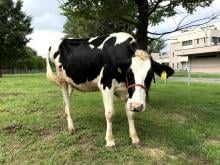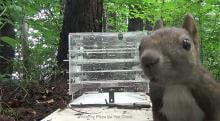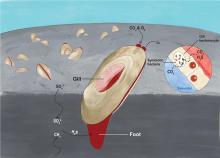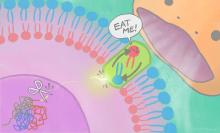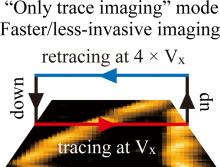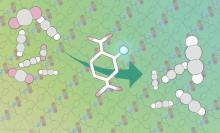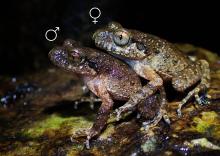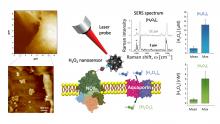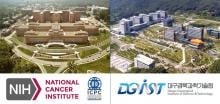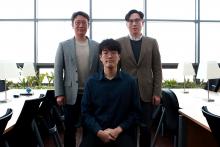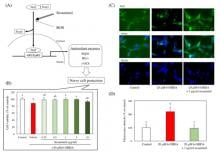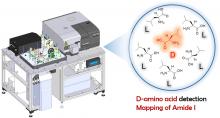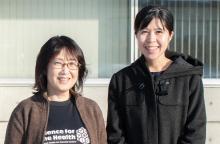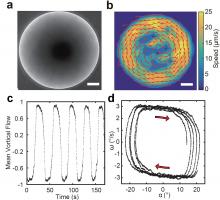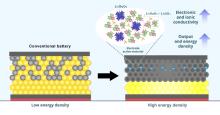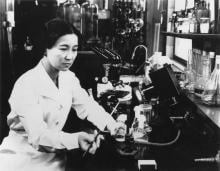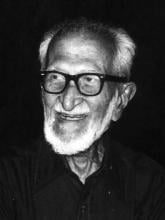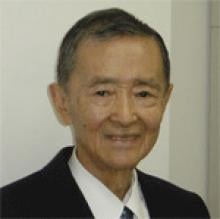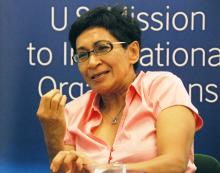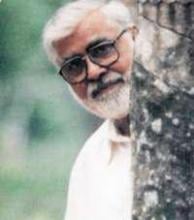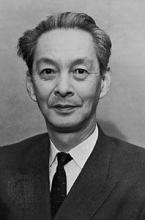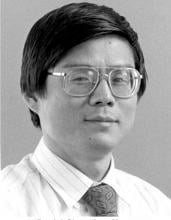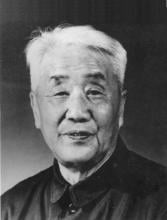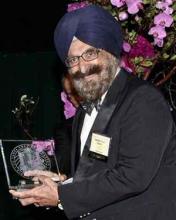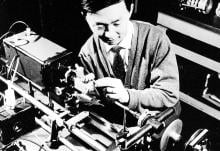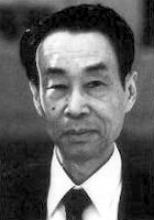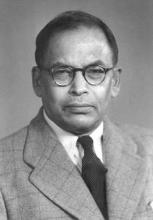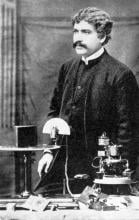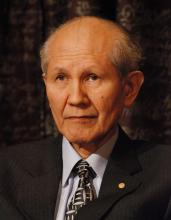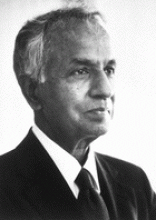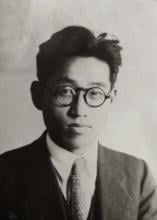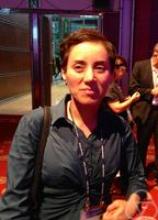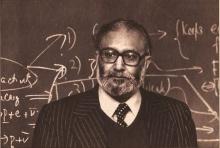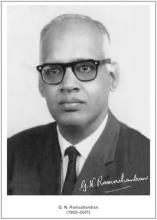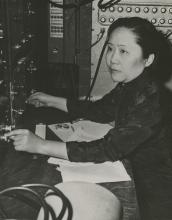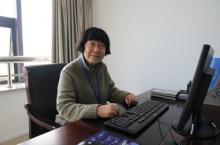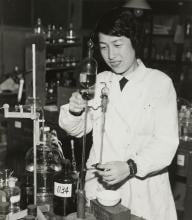Science
News
31 Mar 2021
Tokyo summers are notorious for their sweltering heat and humidity. Scientists have found that the meandering Kuroshio Current may be the cause of increasing hot and humid summers in the Kanto region.
30 Mar 2021
Human disturbance in urban environments makes some squirrels fail, but others perform better in novel problem-solving.
29 Mar 2021
A paper by the Kavli Institute for the Physics and Mathematics of the Universe (Kavli IPMU) Director Ooguri Hirosi and Project Researcher Matthew Dodelson on the string theoretical effects outside the black hole photon sphere has been selected for the “Editors’ Suggestion” of the journal Physical Review D. Their paper was published on March 24, 2021.
29 Mar 2021
A study led by scientists at Hong Kong Baptist University (HKBU) has decoded the genomes of the deep-sea clam (Archivesica marissinica) and the chemoautotrophic bacteria (Candidatus Vesicomyosocius marissinica) that live in its gill epithelium cells. Through analysis of their genomic structures and profiling of their gene expression patterns, the research team revealed that symbiosis between the two partners enables the clams to thrive in extreme deep-sea environments.
26 Mar 2021
An ‘eat-me’ signal displayed on cell surfaces requires activation of a lipid-scrambling protein by a nuclear protein fragment.
25 Mar 2021
Professor David Matchar and his team from the Health Services and Systems Research (HSSR) Programme at Duke-NUS bagged two prestigious awards at the International Stroke Conference 2021, held virtually on 17-19 March, 2021.
25 Mar 2021
Researchers at Kanazawa University report in Review of Scientific Instruments a newly developed atomic force microscopy approach for imaging biological samples and processes. The method offers higher frame rates and less disturbance of samples.
18 Mar 2021
A design concept changes how materials separate gaseous mixtures.
17 Mar 2021
Researchers improve their newly established quantum algorithm, bringing it to one-tenth the computational cost of Quantum Phase Estimation, and use it to directly calculate the vertical ionization energies of light atoms and molecules such as CO, O2, CN, F2, H2O, NH3 within 0.1 electron volts of precision.
14 Mar 2021
The Science Unit of Lingnan University (LU) in Hong Kong has reported a novel form of reproductive behaviour observed in a native frog species, Lau’s Leaf Litter Toad (Leptobrachella laui). Unconventionally, the female frog positions herself on top of the male, which is a reverse of the more usual mating arrangement.
11 Mar 2021
We invite science journalists around the globe to participate of the Global Science Journalism Survey 2021.
11 Mar 2021
Scientists have discovered a route of introduction for High Pathogenicity Avian Influenza Virus (HPAIV) H5N8 into Japan and, in parallel, have investigated the potential of two human anti-influenza drugs for the control of HPAI in birds.
10 Mar 2021
Researchers reveal the path of information received by the hippocampus. Using optogenetics during large-scale recordings of rat subiculum, they discovered that the subiculum distributes information from the hippocampus to 4 downstream regions of the brain. They observed that the theta and sharp-wave/ripples in the subiculum controlled information transmission with millisecond precision according to the target region. This provides the foundation for a comprehensive understanding of the hippocampal memory system.
09 Mar 2021
The fine structure of barium titanite, a potential alternative to lead titanite, has been revealed by researchers employing a novel technique over the extremely short time period that the ferroelectric phenomena experienced by these materials occur. The investigation should assist further exploration of how to replace lead titanate with other materials, so that its widespread applicability may be enjoyed while avoiding its role in lead pollution.
08 Mar 2021
Researchers at Kanazawa University report in Biosensors and Bioelectronics a successful test of a sensor for measuring hydrogen peroxide concentrations near cell membranes. The sensor has the potential to become a tool for new cancer therapies.
08 Mar 2021
What is the origin of black holes and how is that question connected with another mystery, the nature of dark matter? Dark matter comprises the majority of matter in the Universe, but its nature remains unknown.
08 Mar 2021
DGIST, NCI, and Kyung Hee Univ. signed a joint research agreement for clinical proteogenomic cancer research
07 Mar 2021
In honour of International Women's Day, we are highlighting women in research. More than 50 experts across a wide range of disciplines are prepared to speak with international media about their research and women in STEM.
04 Mar 2021
New approach to detect and recover from sophisticated cyberattacks in real time
03 Mar 2021
A team of scientists has, for the first time, identified landfalls of tropical cyclones (TCs) in Japan for the period from 1877 to 2019; this knowledge will help prepare for future TC disasters.
03 Mar 2021
Osaka City University finds that the chemical sesaminol, naturally occurring in sesame seeds, protects against Parkinson’s disease by preventing neuronal damage that decreases the production of dopamine. In vitro experiments show sesaminol handle oxidative stress in cells by regulating the production of reactive oxygen species and the movement of antioxidants. In vivo experiments reveal that a diet of sesaminol increases production of dopamine and significantly improve motor functions in mice.
02 Mar 2021
We developed a multidimensional vibrational circular dichroism system with position and time coordinates using a quantum cascade laser (QCL) as a light source to achieve high intensity and narrow focusing. The QCL emitted light in the wavenumber range of 1500–1740 cm-1, which encompassed absorption bands assigned to the stretching vibrations of amides I and II. A scanning device was installed to move an attached motorized stage in two dimensions.
26 Feb 2021
Tohoku University Researchers tweaked the diet of silkworms by adding cellulose nanofiber to their food. The resultant silk was stronger and more durable. This new method of realizing cellulose nanofiber synthesized silk is a sustainable way to produce biomaterials.
26 Feb 2021
Twenty-two scholars of The Education University of Hong Kong (EdUHK) were named on Stanford University’s list of the top two per cent most-cited scientists in various disciplines, including President Professor Stephen Cheung Yan-leung, Chair Professor of Public Policy; Professor Jim Chi-yung, Research Chair Professor of Geography & Environmental Science; and Professor Wong Ming-hung, Advisor (Environmental Science).
25 Feb 2021
This article is an excerpt from the Hokkaido University research magazine “Tackling Global Issues vol.3 Fighting the menace of zoonosis" (link below).
25 Feb 2021
New study shows that uneven accumulation of amyloid β is linked to olfactory dysfunction or partial loss of smell, an early symptom of Alzheimer’s disease

24 Feb 2021
Springer Nature and the University of Tokyo to hold SDGs Symposium 2021, “Interdisciplinary science solutions for food, water, climate and ecosystems Sustainable Development Goals”
19 Feb 2021
An international team led by Professor Yilin Wu, Associate Professor of the Department of Physics at The Chinese University of Hong Kong (CUHK) has made a novel conceptual advance in the field of active matter science. The team discovered a new route in which the self-organisation of active fluids in space and time can be controlled by a single material property called viscoelasticity. This new finding may pave the way for fabricating a new class of self-driven devices and materials, such as the ability to control the rhythmic movement of soft robots without relying on electronic circuits, and for the study of microbial physiology. It has been published in the scientific journal Nature.
18 Feb 2021
Lithium ion batteries use liquid electrolytes that have several drawbacks, which can be overcome by all-solid-state lithium secondary batteries (ASSBs). However, it is important to find efficient electrode materials for ASSBs. A research team from Japan has recently developed a novel electrode material for ASSBs by combining lithium sulfate and lithium ruthenate, which results in improved performance. The scientists hope that their novel approach will guide future research and the eventual commercialization of such high-capacity batteries.
Events

22 Feb 2007
This conference aims to bring together innovative academics, researchers and industrial experts in the field of electronics, communications and allied fields to a common forum, for a constructive dialog on theoretical concepts and practical ideas.

09 Mar 2007
The aim of the Course shall be to cover topics in core pediatric nephrology that are of practical relevance to pediatricians.

12 Aug 2007
Leading international bioengineering and nanotechnology experts will convene at ICBN 2007 to share the latest research advancements at the interface of science, engineering and medicine.
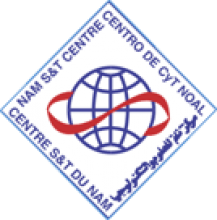
09 Apr 2007
The objectives of this course are to ‘Exchange country information on Micro and Nano electronics and Photonics, Acquaint participants on the current and next generation devices and Deliberate on North-South and South-South collaboration to develop this sector in the developing countries.

17 Jun 2007
Considering the growing importance of biotechnology in the modern world and also the region's strong posture in biotechnology, this Conference will provide an excellent avenue to address the multifarious challenges and opportunities in the field.

26 Jan 2007
This dialogue offers a forum for discussion of the status and potential of marine biotechnology in Malaysia and the world including identification of the issues and challenges in the potential economic and scientific benefits of marine biotechnology.

10 Dec 2007
The objective of the ISNEPP series of symposia is to advance the emerging field of Nanotechnology in the areas of environmental protection and remediation, public health, energy resources and production, and standards and regulation.

01 Jul 2007
ICMAT 2007 will be a multidisciplinary forum providing over 2,000 research scientists and engineers a first-hand learning platform, as well as the opportunity to share and exchange ideas with some of the best minds in the field.

22 Jul 2007
As the fourth conference in the HIV Pathogenesis, Treatment and Prevention series, IAS 2007 will feature reports on the latest developments in the areas of basic, clinical and prevention science.

15 Feb 2007
The theme of the conference is Research and Development in Emerging Technology Management.

23 Jan 2007
A wide range of topics will be addressed including body sensor networks, bio-inspired engineering, low power systems, wireless networks, communication centric design and SoC design methodologies.

12 Feb 2007
The workshop will bring together leading investigators from industry, universities, as well as research institutes in Southeast Asia to present and discuss the use of various animal models including Drosophila, zebrafish, chick and mouse in their research.

06 Dec 2006
International Conference on Institutions and Global Environmental Change in Bali this Week

08 Jan 2007
Natural disasters, almost in every case, do offer a new, live laboratory to test our ideas on the whole range of issues from policy formulation to people’s participation. The Roundtable would provide an opportunity to the participants to discuss these issues through case studies, simulated exercises and exchange of information

08 Nov 2006
The conference is aimed at broadly addressing the present S&T policies being followed in various countries with the degree of success and also exploring the possibility of coordination among developing countries on S&T policies.

18 Jun 2007
The conference will be held at the Islamic University of Gaza (IUG) from 18-19 June 2007. It will focus on important engineering issues relevant to construction and development, which will stimulate construction efforts and development.
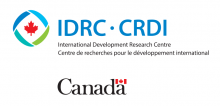
13 Nov 2006
The workshop, supported by AIT, IDRC, and Rockefeller Foundation, will examine existing policies on bio-innovations in the region, identify existing research gaps and recommend a strategy for information sharing, learning and partnering.

07 Nov 2006
MINT Waste Management Center (WMC) is responsible for managing radioactive waste within Malaysia. For an effective radioactive waste management, the importance of waste inventory is of prime concern; whether it is waste generator, waste management agency or regulatory authority.

11 Dec 2006
The Arab Science and Technology Foundation (ASTF) and Ministry of Higher Education , Syria is organising the conference Scientific Research Outlook & Technology Development in the Arab World from December 11- 14 in Damascus, Syria.
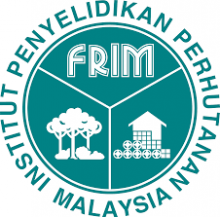
19 Sep 2006
The Clean Development Mechanism (CDM) is the only mechanism applicable to developing countries, where carbon budget could be traded with developed countries. Hence, this seminar is organized to increase awareness on forestry CDM and possible projects that would be generated.

04 Dec 2006
Highlighting the role of sustainable energy and sustainable technology in meeting modern energy demands

18 Sep 2006
The aims of the initiative are to strengthen research capability of scientists in endemic countries and to promote application of bioinformatics in tropical diseases research.

12 Nov 2006
Theme: Development and modern scientific technology of traditional medicine and natural health products.

24 Apr 2006
Meeting of Pandemic experts, scientists and Asian national granting councils in Beijing, April 24-26, at the Beijing Friendship Hotel, Bai Shi Qiao Road, Haidian District, Beijing, China. Media briefing

07 Jul 2006
Internal Conference organised by Institute Of Research, Development and Commercialisation (IRDC), UiTM Shah Alam for all research conducted in 2005
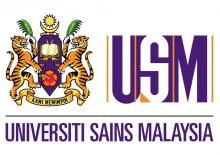
24 May 2006
The inaugural Penang International Postgraduate Convention will take place with the following conferences: 1st Health and Medical Science Conference; 3rd Life Sciences Postgraduate Conference; 1st Penang International Conference for Young Chemists

10 Mar 2006
Theme: "Seismic Hazards and Damage Mitigation in the Asian Region". ACEE 2006 will be an excellent forum for researchers, professionals, engineers, scientists and academicians to exchange ideas and experiences in the fields of seismology, earthquake engineering, seismic risk and disaster mitigation.

08 Mar 2006
Ethical considerations underpin many of the major global issues facing the international community today – climate change, avian influenza and intellectual property rights, to name a few. Technological innovations have progressed at such a rapid pace that public debate on ethical issues has had trouble keeping up.
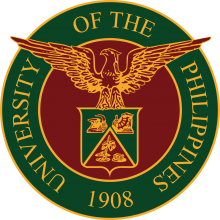
23 Jan 2006
"Emergencies and Disasters: Pearls for the 21st Century Primary Health Care Provider" is especially significant in this day of major calamities and disasters which unexpectedly come at any time and any place. Readiness to meet the challenges that such emergencies bring may be the deciding factor that will determine the possible outcome.

05 Jun 2006
Sample of abstract:“Healers use a variety of material medica including plants, animals and minerals. There were 363 species/types recorded for treating 91 health conditions.” The annual meeting of the Society of Economic Botanists will bring together the current research in this important and interesting field
Giants in history
Chinese biochemist Chi Che Wang (1894 - 1979), one of the first Chinese women to study abroad, advanced to prominent research positions at American institutions including the University of Chicago and the Northwestern University Medical School.
Ruby Sakae Hirose (1904 – 1960) was a Japanese-American scientist whose research contributed significantly to our understanding of blood clotting, allergies and cancer.
Chinese electron microscopy specialist Li Fanghua (6 January 1932 – 24 January 2020) facilitated the high-resolution imaging of crystal structures by eliminating interference.
Sálim Moizuddin Abdul Ali (12 November 1896 – 20 June 1987), commonly referred to as the Birdman of India, was the first person to conduct systematic surveys of birds from across India.
Haisako Koyama (1916 – 1997) was a Japanese solar observer whose dedication to recording sunspots – cooler parts of the sun’s surface that appear dark – produced a sunspot record of historic importance.
Michiaki Takahashi (17 February 1928 – 16 December 2013) was a Japanese virologist who developed the first chickenpox vaccine.
Toshiko Yuasa (11 December 1909 – 1 February 1980) was the first Japanese female physicist whose research on radioactivity shed light on beta decay – the process in which an atom emits a beta particle (electron) and turns into a different element.
Angelita Castro Kelly (1942-2015) was the first female Mission Operations Manager (MOM) of NASA. She spearheaded and supervised the Earth Observing System missions during its developmental stage.
Malaysia’s first astrophysicist, Mazlan binti Othman (born 11 December 1951) was instrumental in launching the country’s first microsatellite, and in sending Malaysia’s first astronaut, Sheikh Muszaphar Shukor, into space.
Known as Mr. Natural Rubber, chemist and researcher B. C. Shekhar (17 November 1929 – 6 September 2006) introduced a number of technical innovations that helped put Malaysia’s natural rubber industry on the world map.
Shinichiro Tomonaga (31 March 1906 – 8 July 1979), together with Richard Feynman and Julian Schwinger, was awarded the Nobel Prize in Physics in 1965, for their contributions to advance the field of quantum electrodynamics. Tomonaga was also a strong proponent of peace, who actively campaigned against the proliferation of nuclear weapons and promoted the peaceful use of nuclear energy.
South Korean theoretical physicist Daniel Chonghan Hong (3 March 1956 – 6 July 2002) achieved fame in the public sphere through his research into the physics of popcorn.
Japanese chemist Kenichi Fukui (4 October 1918 – 9 January 1998) was the first Asian scientist to be awarded the Nobel Prize in Chemistry. Together with Roald Hoffman, he received this honour in 1981 for his independent research into the mechanisms of chemical reactions.
Chinese palaeontologist, archaeologist and anthropologist Pei Wenzhong (January 19, 1904 – September 18, 1982) is regarded as a founder of Chinese anthropology.
Physicist Narinder Singh Kapany (31 October 1926 – 4 December 2020) pioneered the use of optical fibres to transmit images, and founded several optical technology companies. Born in Punjab, India, he worked at a local optical instruments factory before moving to London for PhD studies at Imperial College. There, he devised a flexible fibrescope to convey images along bundles of glass fibres.
Japanese physicist Ukichiro Nakaya (1900-1962) made the world’s first artificial snowflakes. He started his research on snow crystals in the early 1930s at Hokkaido University, where there is an unlimited supply of natural snow in winter. By taking over 3,000 photographs, he established a classification of natural snow crystals and described their relationship with weather conditions.
The field of solid-state ionics originated in Europe, but Takehiko Takahashi of Nagoya University in Japan was the first to coin the term ‘solid ionics’ in 1967. ‘Solid-state ionics’ first appeared in 1971 in another of his papers, and was likely a play on ‘solid-state electronics’, another rapidly growing field at the time.
Charles Kuen Kao (Nov. 4, 1933 to Sept. 23, 2018) was an engineer who is regarded as the father of fibre optics. His work in the 1960s on long distance signal transmission using very pure glass fibres revolutionized telecommunications, enabling innovations such as the Internet.
Chika Kuroda (24 March 1884 – 8 November 1968) was a Japanese chemist whose research focussed on the structures of natural pigments.
Motoo Kimura (13 November 1924 – 13 November 1994) was a Japanese theoretical population geneticist who is best remembered for developing the neutral theory of molecular evolution.
Meghnad Saha (6 October 1893 – 16 February 1956) was an Indian astrophysicist best known for formulating the Saha ionization equation which describes the chemical and physical properties of stars.
Sir Jagadish Chandra Bose (30 November 1858 – 23 November 1937) was a scientist and inventor who contributed to a wide range of scientific fields such as physics, botany and biology.
Osamu Shimomura (27 August 1928 – 19 October 2018) was a Japanese organic chemist and marine biologist who dedicated his career to understanding how organisms emitted light.
Subrahmanyan Chandrasekhar (19 October 1910 – 21 August 1995) was an Indian astrophysicist who studied the structure and evolution of stars.
Joo-myung Seok (November 13, 1908 – October 6, 1950) was a Korean butterfly entomologist who made important contributions to the taxonomy of the native butterfly species in Korea.
Mathematician Maryam Mirzakhani (12 May 1977 – 14 July 2017) was the first and only woman and Iranian to date to win the Fields Medal in 2014 for her work on curved surfaces.
Sir Chandrasekhara Venkata Raman (7 November 1888 – 21 November 1970) was an Indian physicist who performed ground-breaking research in the field of light-scattering.
Mohammad Abdus Salam (29 January 1926 – 21 November 1996) was a theoretical physicist and the first Pakistani to receive a Nobel Prize in science.
Srinivasa Ramanujan (22 December 1887 – 26 April 1920) was a math prodigy and widely considered one of India’s greatest mathematicians. Despite having almost no formal training in mathematics, he made substantial contributions to mathematical analysis, number theory, infinite series and continued fractions.
Gopalasamudram Narayanan Ramachandran (8 October 1922 – 7 April 2001) is best known for developing the Ramachandran plot to understand the structure of short chains of amino acids, known as peptides.
Hitoshi Kihara (1893 – 1986) was one of the most famous Japanese geneticists of the 20th century. One of his most significant contributions was identifying sex chromosomes (X and Y) in flowering plants.
Chien-Shiung Wu (31 May 1912 – 16 February 1997) was an experimental physicist who made several important contributions to nuclear physics. Wu worked on the Manhattan Project – a top-secret program for the production of nuclear weapons during World War II and helped to develop a process for separating uranium into U235 and U238.
Meemann Chang (born 17 April 1936) is a Chinese palaeontologist who studied the fossils of ancient fish to understand the evolution of life. By examining fossils, she uncovered new insights on how vertebrates, animals with a backbone, migrated from the sea and became adapted to live on land.
Bibha Chowdhuri (1913 – 2 June 1991) was an Indian physicist who researched on particle physics and cosmic rays. In 1936, she was the only female to complete a M.Sc. degree at the University of Calcutta.
Lin Lanying (7 February 1918 – 4 March 2003) was a Chinese material engineer remembered for her contributions to the field of semiconductor and aerospace materials. Lanying was born into a family who did not believe in educating girls and she was not allowed to go to school.
Japanese geochemist Katsuko Saruhashi developed the first method and tools for measuring carbon dioxide in seawater


